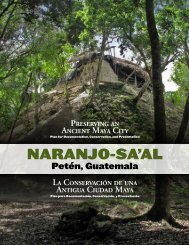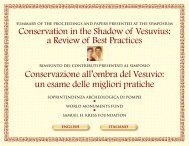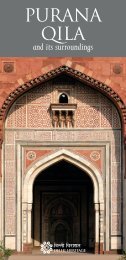Bierman Henket architecten Wessel de Jonge architecten - World ...
Bierman Henket architecten Wessel de Jonge architecten - World ...
Bierman Henket architecten Wessel de Jonge architecten - World ...
You also want an ePaper? Increase the reach of your titles
YUMPU automatically turns print PDFs into web optimized ePapers that Google loves.
10<br />
zonnesTraal sanaTorium was <strong>de</strong>signed between 1925 and 1927 by Jan Duiker (1890–<br />
1935), the leading spokesman for the mo<strong>de</strong>rn movement in the Netherlands, Bernard Bijvoet<br />
(1889–1979), and structural engineer Jan Gerko Wiebenga (1886–1974). Completed in 1931, the<br />
sanatorium functioned as a rehabilitation center for tuberculosis patients and was <strong>de</strong>signed with<br />
the conviction that a cure for the <strong>de</strong>adly disease would be discovered within thirty to fifty years.<br />
Embracing the progressive i<strong>de</strong>als of the mo<strong>de</strong>rn movement, Zonnestraal’s architecture sought<br />
short-term functionality, providing the requisite lighting and ventilation that specialists postulated<br />
was necessary to treat the illness.<br />
Zonnestraal was celebrated as a significant monument in the early years of the mo<strong>de</strong>rn<br />
movement even while it was un<strong>de</strong>r construction. The <strong>de</strong>ath of Duiker in 1935 and progress in the<br />
eradication of tuberculosis following the Second <strong>World</strong> War, however, saw the sanatorium soon<br />
fa<strong>de</strong> from public and aca<strong>de</strong>mic notice, falling into disuse and disrepair, with sections almost literally<br />
disappearing into the surrounding landscape. For nearly two <strong>de</strong>ca<strong>de</strong>s, Zonnestraal was forgotten.<br />
In the 1960s, however, the sanatorium was rediscovered and <strong>de</strong>emed by architectural historians<br />
to be a major monument of mo<strong>de</strong>rn architecture. In 1982, faced with the looming physical <strong>de</strong>cline<br />
and programmatic obsolescence of a growing body of mo<strong>de</strong>rn architecture in The Netherlands,<br />
the Dutch government convened leading architects, hea<strong>de</strong>d by Hubert-Jan <strong>Henket</strong> and <strong>Wessel</strong> <strong>de</strong><br />
<strong>Jonge</strong>, to address this problem. Zonnestraal was the monumental iconic example used as the<br />
template for the study on how to save mo<strong>de</strong>rn buildings. Completed in 1987, the study led not only<br />
to a conservation program for Zonnestraal, but to the eventual creation (in 1988) of an international<br />
movement to save great works of mo<strong>de</strong>rn architecture: DOCOMOMO. Zonnestraal’s physical<br />
survival was assured when it received landmark protection in 1995.<br />
Over the last 15 years, exhaustive research and painstaking conservation and reconstruction by<br />
Messrs. <strong>Henket</strong> and <strong>Wessel</strong> <strong>de</strong> <strong>Jonge</strong> have seen the sanatorium restored to its original splendor<br />
and re-purposed for contemporary use. Zonnestraal now serves as a multi-purpose health facility,<br />
accommodating several health care provi<strong>de</strong>rs, an obesity clinic, a sports injury rehabilitation clinic,<br />
and a conference center.<br />
The conservation effort to save the sanatorium is both immediate and long-term, site specific<br />
and global. Nearly eighty years after its original date of completion, the architects’ commitment to<br />
restoring the complex architecture and reviving its purpose furthers the legacy of Zonnestraal as an<br />
icon of the mo<strong>de</strong>rn movement.
















